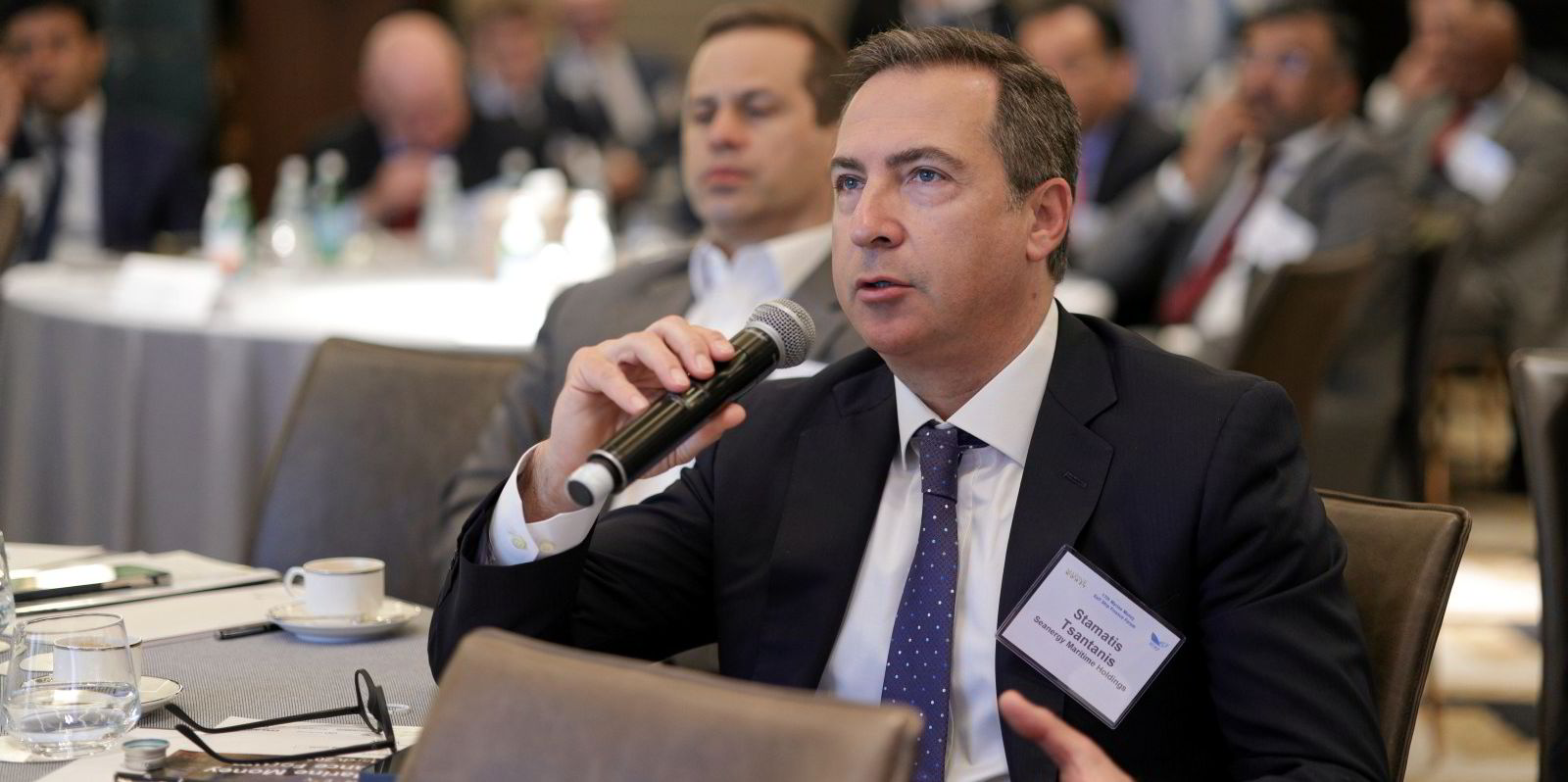Seanergy Maritime chief executive Stamatis Tsantanis can give several reasons as to why he expects the rising capesize bulker market to continue its upward trend, following a months-long steady decline.
The Baltic Exchange’s Capesize 5TC of spot-rate averages across five key routes slid steadily from above $23,000 per day in late December to just under $2,300 per day by mid-February before rising back up to about $17,500 per day by Wednesday.
The 5TC posted modest progress on Monday, improving 1.7% to $16,134 per day after losing a bit of ground after falling away almost $1,600 per day on Thursday and Friday.
“We are optimistic on the market for a number of reasons. First, we believe that the demand is going to be very strong for seaborne transportation of raw materials like iron ore, coal and bauxite because China is re-emerging from three years of lockdowns and because we have huge infrastructure projects,” Tsantanis told TradeWinds on Monday during Capital Link’s 17th annual international shipping forum in New York.
“What is completely underplayed and underexplained is the UAE Saudi investment, which is $1.5trn from now until 2030. This is not something that is not subject to Senate or Congress approvals.
“They just build things very quickly, so that’s going to be a massive driver for dry bulk.”
Despite his optimism as the owner of 16 capesizes and the rising average spot rate, capesizes were getting fixed at lower freight rates last week as the days continued.
Fortescue Metals Group hired an unnamed capesize on Friday to carry 160,000 tonnes of iron ore from Port Hedland, Australia, to Qingdao, China, at $8.80 per tonne after loading the ship from 31 March to 2 April.
On 15 March, Rio Tinto fixed an unnamed capesize to ship iron ore from Dampier, Australia, to Qingdao at $8.95 per tonne after loading the vessel from 27 to 29 March.
Tsantanis also said the International Maritime Organization’s Carbon Intensity Indicator (CII) and Energy Efficiency Design Index (EEXI) regulations will further propel rates by discouraging owners from ordering newbuildings.
“At the same time, the effects of the supply reduction have not been visible yet because it has only been the first few months of the new regulations, so EEXI and CII will have an impact on the market,” he said.
“It’s likely going to be in 2024 and 2025 and onwards, but the fact that we have the lowest orderbook in the past 20 years. Nobody is willing to build new ships.”

He said the tight supply should keep rates elevated because it takes any shipping sector a long time to increase supply.
“It’s far more sustainable than, let’s say, congestion or whatever,” he said.
“That’s only temporary.”
Given the upward trend, Seanergy has fixed rates on contracts to about $20,000 per year for the rest of 2023 instead of linking them to the Baltic Capesize Index, he said.
“We think the market will go even higher,” he added.
The company is hopeful that China’s rebounding housing prices and surging manufacturing sector will create robust demand for iron ore and coal that will boost capesize rates for the long term, he said.
“You have all this demand going up, so you have all these demand and supply factors that we think will be very positive for capesizes.”





